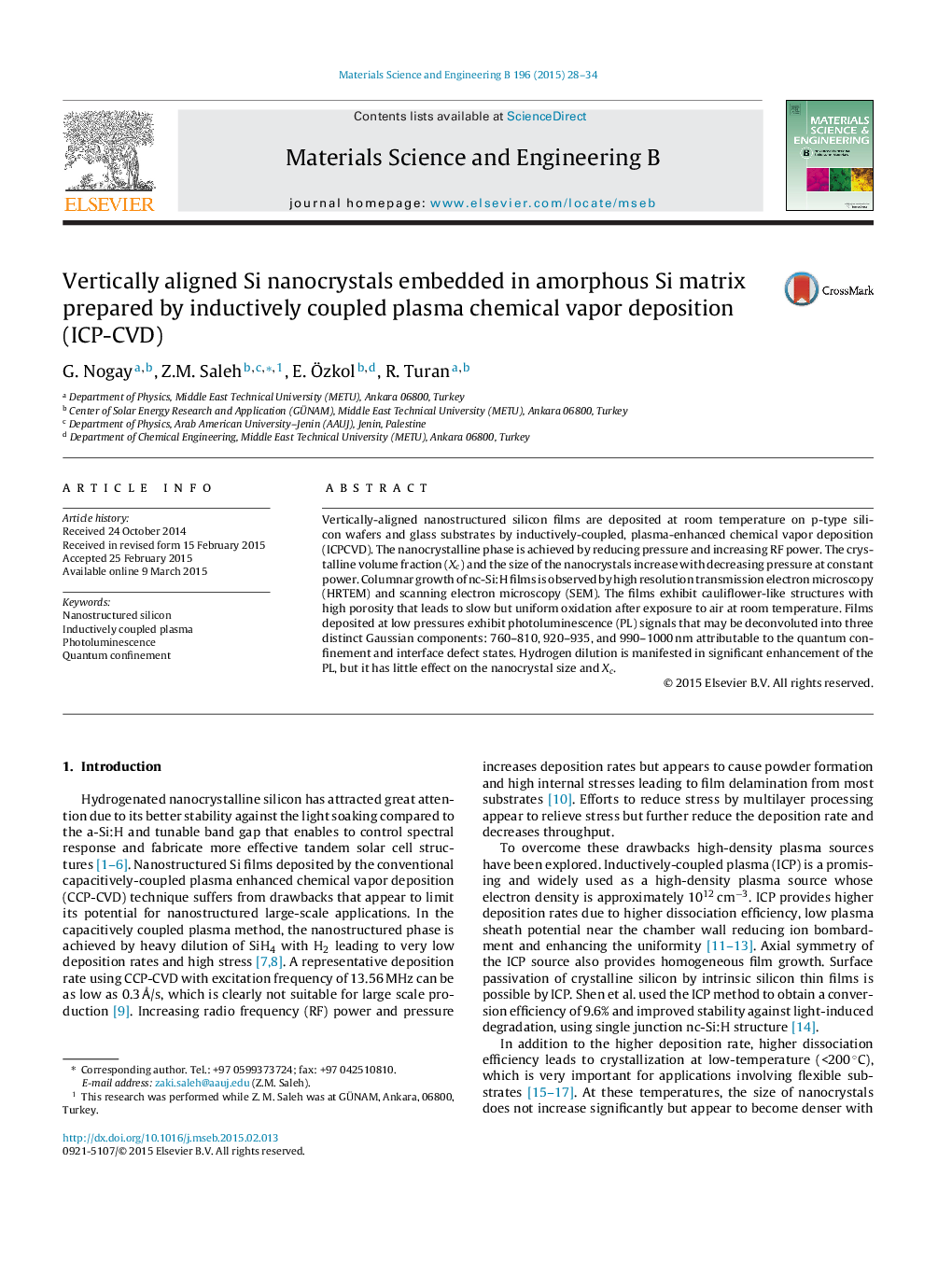| Article ID | Journal | Published Year | Pages | File Type |
|---|---|---|---|---|
| 1528576 | Materials Science and Engineering: B | 2015 | 7 Pages |
•Inductively-coupled plasma is used for nanostructured silicon at room temperature.•Low temperature deposition allows device processing on various substrates.•Deposition pressure is the most effective parameter in controlling nanostructure.•Films consist of quantum dots in a-Si matrix and exhibit columnar vertical growth.•Films are porous to oxygen infusion along columnar grain boundaries.
Vertically-aligned nanostructured silicon films are deposited at room temperature on p-type silicon wafers and glass substrates by inductively-coupled, plasma-enhanced chemical vapor deposition (ICPCVD). The nanocrystalline phase is achieved by reducing pressure and increasing RF power. The crystalline volume fraction (Xc) and the size of the nanocrystals increase with decreasing pressure at constant power. Columnar growth of nc-Si:H films is observed by high resolution transmission electron microscopy (HRTEM) and scanning electron microscopy (SEM). The films exhibit cauliflower-like structures with high porosity that leads to slow but uniform oxidation after exposure to air at room temperature. Films deposited at low pressures exhibit photoluminescence (PL) signals that may be deconvoluted into three distinct Gaussian components: 760–810, 920–935, and 990–1000 nm attributable to the quantum confinement and interface defect states. Hydrogen dilution is manifested in significant enhancement of the PL, but it has little effect on the nanocrystal size and Xc.
